#per cent in population
Explore tagged Tumblr posts
Text
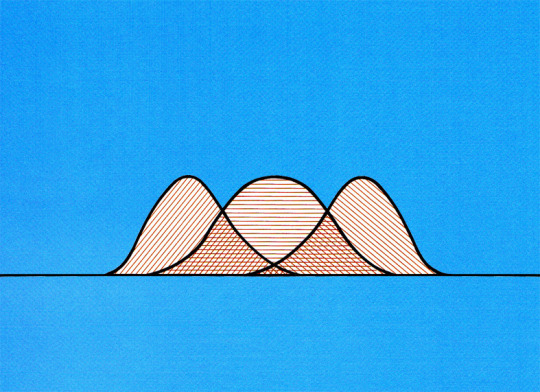
page 233 - this is me learning graphs. This is me getting ready to court, compliments about data sets and how straight and long the y axis looks in the moonlight.
#biology#biologist#zoology#zoologist#text#textbook#love#marriage#babies#family#height#graph#graphic#data#per cent in population#economics#data set#nice data set
16 notes
·
View notes
Text
Do you ever think about how anatomically modern humans evolved around 300,000 years ago? For three hundred thousand years humans have been been around doing our thing. I mean, try to imagine 300,000 years into the future!!! That's so freakin long!!
And the first person whose name we know lived around five thousand years ago
We barely know anything about two hundred ninety five thousand years worth of humans
#I mean what the fuck#I can't even fathom what human civilization will look like 1000 years from now#never mind 295x that long!!!!#posts#going feral on wikipedia this evening as per usual#This started like an hour ago because I wanted to look up the population of ancient athens#which apparently was about 120 000 during the 4th cent BCE#which is also a highly insane number btw!!!!!!#but this post isn't about that#....I should go to bed early huh
9 notes
·
View notes
Text
People in northern Gaza have been forced to survive on an average of 245 calories a day - less than a can of fava beans - since January, as Israeli forces continue their military onslaught. Over 300,000 people are believed to still be trapped there, unable to leave. The miniscule amount of food represents less than 12 per cent of the recommended daily 2,100 calorie intake needed per person, calculated using demographic data considering variations by age and gender. Last week, the Israeli government told UNRWA, by far the largest aid provider in Gaza, that its convoys would no longer be allowed into the north. Oxfam’s analysis is based on the latest available data used in the recent Integrated Food Security Phase Classification (IPC) analysis for the Gaza Strip. Oxfam also found that the total food deliveries allowed into Gaza for the entire 2.2 million population - since last October - amounted to an average of just 41 per cent of the daily calories needed per person.
#yemen#jerusalem#tel aviv#current events#palestine#free palestine#gaza#free gaza#news on gaza#palestine news#news update#war news#war on gaza#northern gaza#famine#gaza genocide#genocide
2K notes
·
View notes
Text
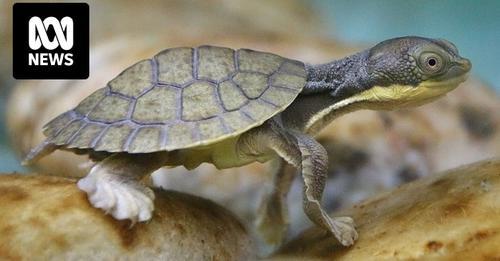
Conservationists release largest group of zoo-bred Bellinger River snapping turtles after virus wipe-out
Nearly a decade after a virus nearly wiped out a population of turtles unique to northern New South Wales, researchers say its origins remain a mystery as a project to repopulate the species hits a major milestone. Now identified as the Bellinger River Virus, it triggered a mass mortality event in 2015 that decimated 90 per cent of the river's snapping turtle population within six weeks. At the time, the state government placed 16 healthy turtles into a zoo-based breeding program led by Taronga Zoo as part of the NSW government's Saving our Species program. Some 179 Bellinger River snapping turtles have since been released after the program started in 2018, with 97 turtles reintroduced into the river during December marking the largest group yet...
Read more: https://www.abc.net.au/news/2024-04-09/bellinger-river-snapping-turtle-conservation-release-zoo-bred/103681974
870 notes
·
View notes
Text
The population of giant pandas in the wild has nearly doubled as China steps up its conservation efforts.
China’s National Forestry and Grassland Administration said on Jan 25 there are now around 1,900 pandas in the wild from some 1,100 in the 1980s.
This has been due to China’s efforts to protect the species, considered a national treasure, said Mr Zhang Yue, an official with the administration.
The Giant Panda National Park was established in October 2021, covering a total area of over 22,000 sq km and providing a home to around 72 per cent of the wild giant panda population.
Protected areas for giant pandas have grown from 1.39 million ha to 2.58 million ha since 2012.
The International Union for Conservation of Nature has adjusted the status of giant pandas from “endangered” to “vulnerable”.
“This indicates that China’s giant panda conservation efforts have been recognised by the international wildlife conservation community,” Mr Zhang said.
The global captive population of giant pandas, meanwhile, has now reached 728, with 46 pandas successfully bred in captivity in 2023.
The genetic diversity of captive giant pandas has also improved. The current captive population of giant pandas can maintain 90 per cent genetic diversity for up to 200 years.
As for giant pandas living abroad, Mr Zhang said China has organised field inspections and assessments of 23 overseas cooperation institutions in 19 countries since 2023.
“The cooperation institutions generally meet the requirements in terms of venue construction, feeding and nursing, and disease prevention and control measures,” Mr Zhang said, adding that pandas living abroad are generally “in good health”.
He said China will further improve the international cooperation management mechanism for giant pandas, carry out regular daily health monitoring and field inspection and assessment, and continue to strengthen cooperation with international partners for the protection of endangered species and biodiversity.
-via The Straits Times, January 25, 2024
#panda#panda bear#pandas#china#endangered species#conservation#conservation news#conservation efforts#conservation practices#ecology#wildlife conservation#zoo animals#zoology#wildlife#wild animals#national park#giant panda national park#icun#good news#hope#hopepunk
1K notes
·
View notes
Note
can u elaborate on posture being a lie
As Beth Linker explains in her book “Slouch: Posture Panic in Modern America” (Princeton), a long history of anxiety about the proximity between human and bestial nature has played out in this area of social science. Linker, a historian of medicine at the University of Pennsylvania, argues that at the onset of the twentieth century the United States became gripped by what she characterizes as a poor-posture epidemic: a widespread social contagion of slumping that could, it was feared, have deleterious effects not just upon individual health but also upon the body politic. Sitting up straight would help remedy all kinds of failings, physical and moral [...] she sees the “past and present worries concerning posture as part of an enduring concern about so-called ‘diseases of civilization’ ”—grounded in a mythology of human ancestry that posits the hunter-gatherer as an ideal from which we have fallen.
[...]
In America at the turn of the twentieth century, anxieties about posture inevitably collided with anxieties not just about class but also about race. Stooping was associated with poverty and with manual, industrialized labor—the conditions of working-class immigrants from European countries who, in their physical debasement, were positioned well below the white Anglo-Saxon Protestant establishment. Linker argues that, in this environment, “posture served as a marker of social status similar to skin color.” At the same time, populations that had been colonized and enslaved were held up as posture paradigms for the élite to emulate: the American Posture League rewarded successful students with congratulatory pins that featured an image of an extremely upright Lenape man. The head-carrying customs associated with African women were also adopted as training exercises for white girls of privilege, although Linker notes that Bancroft and her peers recommended that young ladies learn to balance not baskets and basins, which signified functionality, but piles of flat, slippery books, markers of their own access to leisure and education. For Black Americans, posture was even more fraught: despite the admiration granted to the posture of African women bearing loads atop their heads, community leaders like Dr. Algernon Jackson, who helped establish the National Negro Health Movement, criticized those Black youth who “too often slump along, stoop-shouldered and walk with a careless, lazy sort of dragging gait.” If slouching among privileged white Americans could indicate an enviable carelessness, it was seen as proof of indolence when adopted by the disadvantaged.
This being America, posture panic was swiftly commercialized, with a range of products marketed to appeal to the eighty per cent of the population whose carriage had been deemed inadequate by posture surveys. The footwear industry drafted orthopedic surgeons to consult on the design of shoes that would lessen foot and back pain without the stigma of corrective footwear: one brand, Trupedic, advertised itself as “a real anatomical shoe without the freak-show look.” The indefatigable Jessie Bancroft trained her sights on children’s clothing, endorsing a company that created a “Right-Posture” jacket, whose trim cut across the upper shoulders gave its schoolboy wearer little choice but to throw his shoulders back like Jordan Baker. Bancroft’s American Posture League endorsed girdles and corsets for women; similar garments were also adopted by men, who, by the early nineteen-fifties, were purchasing abdominal “bracers” by the millions.
It was in this era that what eventually proved to be the most contentious form of posture policing reached its height, when students entering college were required to submit to mandatory posture examinations, including the taking of nude or semi-nude photographs. For decades, incoming students had been evaluated for conditions such as scoliosis by means of a medical exam, which came to incorporate photography to create a visual record. Linker writes that for many male students, particularly those who had military training, undressing for the camera was no biggie. For female students, it was often a more disquieting undertaking. Sylvia Plath, who endured it in 1950, drew upon the experience in “The Bell Jar,” whose protagonist, Esther Greenwood, discovers that undressing for her boyfriend is as uncomfortably exposing as “knowing . . . that a picture of you stark naked, both full view and side view, is going into the college gym files.” The practice of taking posture photographs was gradually abandoned by colleges, thanks in part to the rise of the women’s movement, which gave coeds a new language with which to express their discomfort. It might have been largely forgotten were it not for a 1995 article in the Times Magazine, which raised the alarming possibility that there still existed stashes of nude photographs of famous former students of the Ivy League and the Seven Sisters, such as George H. W. Bush, Bob Woodward, Meryl Streep, and Hillary Clinton. Many of the photographs in question were taken and held not by the institutions themselves but by the mid-century psychologist William Herbert Sheldon. Sheldon was best known for his later discredited theories of somatotypes, whereby he attributed personality characteristics to individuals based on whether their build was ectomorphic, endomorphic, or mesomorphic.
[...]
Today, the descendants of Jessie Bancroft are figures like Esther Gokhale, a Bay Area acupuncturist and the creator of the Gokhale Method, who teaches “primal posture” courses to tech executives and whose recommendations are consonant with other fitness trends, such as barefoot running and “paleo” eating, that romanticize an ancestral past as a remedy for the ills of the present. The compulsory mass surveillance that ended when universities ceased the practice of posture photography has been replaced by voluntary individual surveillance, with the likes of Rafi the giraffe and the Nekoze cat monitoring a user’s vulnerability to “tech neck,” a newly named complaint brought on by excessive use of the kind of devices profitably developed by those paleo-eating, barefoot-running, yoga-practicing executives. Meanwhile, Linker reports, paleoanthropologists quietly working in places other than TikTok have begun to revise the popular idea that our ancient ancestors did not get aches and pains in their backs. Analysis of fossilized spines has revealed degenerative changes suggesting that “the first upright hominids to roam the earth likely experienced back pain, or would have been predisposed to such a condition if they had lived long enough.” Slouching, far from being a disease of civilization, then, seems to be something we’ve been prone to for as long as we have stood on our own two feet.
954 notes
·
View notes
Note
All these fucking immigrants are ruining this country, nobody can find a job or housing because these pieces of shit are coming here and taking the jobs and buying up all the rentals, these selfish outsiders don't care that they are destroying this country. And people won't talk about it because if you point it out, you're racist.
You are a racist. Fuck off.
453 notes
·
View notes
Text
Good News - May 15-21
Like these weekly compilations? Support me on Ko-fi! Also, if you tip me on Ko-fi, at the end of the month I'll send you a link to all of the articles I found but didn't use each week - almost double the content!
1. Translocation of 2,000 rhinos in Africa gets underway in “one of the most audacious conservation efforts of modern times”
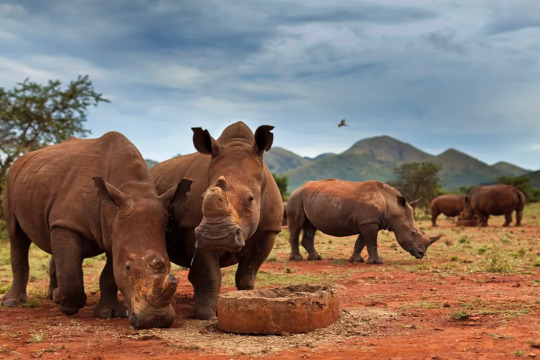
“The 2,000 rhinos - more than are currently found in any single wild location in Africa - represent around 12-15% of the continent’s remaining white rhino population. […] “Rhinos perform an important ecological function in the environment as a large grazing herbivore,” says Dale Wepener[….] “The protection of rhino is far more than just looking after rhino; other species that occur in the protected areas will benefit from the protection,” explains Jooste. “This will lead to an increase in diversity and result in much healthier ecosystems.”
2. Florida Corridor Buffers Effects of Climate Change on Wildlife — And People
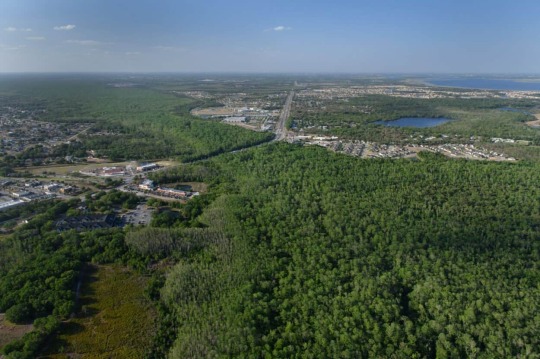
“A massive multi-partner effort that has conserved 10 million acres for wildlife in Florida over past decades will help buffer wildlife—and people—from the effects of climate change, a new report says. […] Protecting these corridors is important for wildlife genetics, demography and connectivity […], conducting prescribed fires in the corridor can reduce the risk of more intense wildfires [… and] they can provide buffers against hurricanes and seasonal thunderstorms.”
3. Global life expectancy to increase by nearly 5 years by 2050 despite geopolitical, metabolic, and environmental threats
“Increases are expected to be largest in countries where life expectancy is lower, contributing to a convergence of increased life expectancy across geographies. The trend is largely driven by public health measures that have prevented and improved survival rates from cardiovascular diseases, COVID-19, and a range of communicable, maternal, neonatal, and nutritional diseases (CMNNs).”
4. Valencia has Spain’s longest urban park
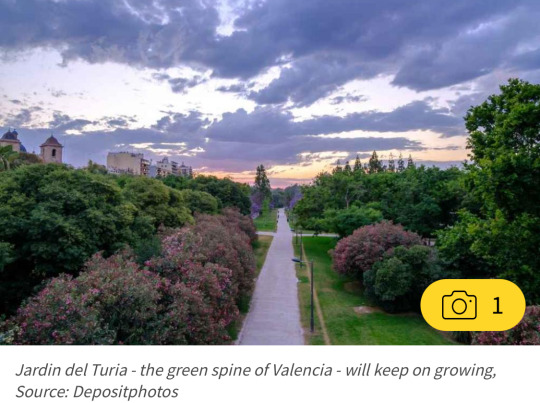
“Jardin del Turia (Turia Garden) is the green spine of the City of Valencia and Spain’s (and possibly Europe’s) longest urban park stretching for a length of 8.5 kilometres [… and] the current administration plans to make Jardin del Turia Europe’s largest city green space by extending it to the sea[….] Almost all Valencia residents (97 per cent) live within 300 metres of an urban green space. […] Jardin del Turia is a true urban oasis that provides exceptional thermal comfort, with a temperature difference of up to three degrees compared to other areas of the city.”
5. This Paint Could Clean Both Itself and the Air
“When an artificial ultraviolet light source shines on [photocatalytic] paint, the nanoparticles react with pollutants to make them break down—theoretically removing them from the nearby air and preventing a discoloring buildup. [… R]esearchers developed a new photocatalytic paint that they claim works using UV rays from ordinary sunlight, making its self-cleaning properties easier to activate. They’ve also shown that they can effectively produce this paint from recycled materials [including fallen leaves].”
6. Planting Seedlings for a Cooler Rockingham
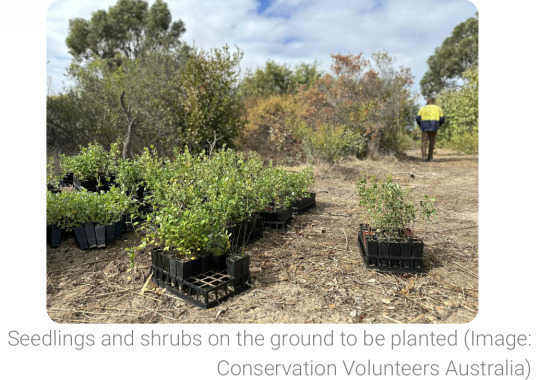
“A dedicated group of volunteers recently planted over a thousand native seedlings in Lewington Reserve [… and] re-established canopy cover to areas of the reserve to create cooling shade for the local community and provide homes for native wildlife. […] Planting lots of trees and shrubs in urban areas can help create shade and cool cities, mitigating the impacts of climate change, contributing to biodiversity conservation and building greener, more resilient communities.”
7. Sydney’s first dedicated affordable housing for trans women designed to deliver ‘positive outcomes’

“Community housing provider and charity Common Equity NSW, […] which is for people on very low to moderate incomes, prides itself on creating inclusive living and promotes the independence and well-being of people and communities […, and] will deliver the first-of-its-kind social housing in a bid to provide a safe place to live for transgender women seeking an affordable home.”
8. Rewilding: How a herd of bison reintroduced to Romania is helping ‘supercharge’ carbon removal
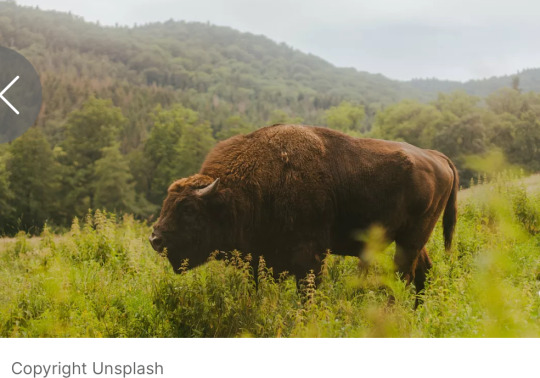
“170 European Bison reintroduced to Romania’s Țarcu mountains could help capture and store the carbon released by up to 84,000 average US petrol cars each year. […] By grazing a 48 square kilometre area of grassland in a wider landscape of 300 kilometres squared, they helped to capture an additional 54,000 tonnes of carbon each year. That is around 10 times the amount that would be captured by the ecosystem without the bison.”
9. World’s biggest grids could be powered by renewables, with little or no storage

“[…] 100% renewable supply can then match the load by putting surplus electricity into two kinds of distributed storage worth that [an energy expert] says are worth buying anyway – ice-storage air-conditioning and smart bidirectional charging of electric cars, and recover that energy when needed, filling the last gaps with unobtrusively flexible demand.”
10. Supporting the Long-Term Survival of Copper River Salmon and Alaska Native Traditions

“With $4.3 million in NOAA funds, the Copper River Watershed Project and The Eyak Corporation will remove fish passage barriers, opening more streams for salmon spawning and subsistence fishing. [… As part of this effort, o]ld narrow culverts that constrict water flow will be replaced with “stream simulation” culverts wide enough to fit the full stream, including its banks. They are also deep to allow contractors to place stones and other material inside to mimic a natural stream bottom.”
May 8-14 news here | (all credit for images and written material can be found at the source linked; I don’t claim credit for anything but curating.)
#hopepunk#good news#rhino#white rhino#africa#conservation#rewilding#climate change#florida#wildlife#life expectancy#health#spain#green space#urban parks#recycling#trees#global warming#trans#affordable housing#australia#bison#romania#carbon#carbon capture#renewableenergy#reforestation#salmon#alaska native#nature
390 notes
·
View notes
Text
Nobody does horrible, universe-shattering war crimes like this little guy.
i love Seventh "the doctor" Doctor so much its unreal
#doctor who#virgin new adventures#we out here on the sidelines for eternity weeps as cheerleaders#yesss king reduce the earth's population by ten per cent#you are absolutely giving time's champion rn 💯💪🙏#talk about a problematic fav#low-key the worst tags i've ever written i'm sorry
19 notes
·
View notes
Note
Helloooo your recs give me life. You’ve probably done this before, but any recommendations for fics that include a brutally pining Derek and oblivious Stiles? Ideally canon-verse but aus are also loved. Thanks in advance!!
I'm sure I have, but I love pining in all fics. So I'm happy to make a million lists of it.

Fun by Halevetica
(1/1 I 3,889 I Teen)
Stiles convinces Derek to go to the annual Beacon Hills bonfire with him, with the promise of fun. What he gets instead are a lot of assumptions that he and Stiles are dating, and Stiles' too-eager dismissals, which are decidedly NOT fun for Derek.
Game On by stilinskisparkles
(1/1 I 6,391 I Teen)
Derek first sees him from across the quad four days into fall semester. He’s sitting on one of the long benches, a marker pen in his mouth, grinning at something the kid lounging on the bench beside him is saying. When he laughs properly he pulls the pen out and throws his head back, his neck a long, lean line Derek is entranced by. He flicks the page in his book and highlights something, tossing the cap up in the air and catching it with his teeth.
Written in the Stars by Quixoticity
(6/6 I 26,586 I Mature)
Derek Hale is a lucky guy. He's got a great family, good friends, and a fulfilling job as a tattoo artist.
He's also one of the twenty-five per cent of the population born with a soul mark.
He likes his life, but he's waiting for his soul-match. The odds of meeting them aren't great but hey, Derek's a lucky guy. He has faith.
He can't believe how good his luck really is when one day his soul-match wanders right into his studio, all long limbs and copper eyes. There's just one problem: Stiles is there to get his soul mark covered up. Permanently.
Mating Habits of the Domesticated North American Werewolf by lielabell
(5/5 I 35,458 I Mature)
Derek doesn’t do pining. He doesn’t. So when it becomes clear that Stiles is much more interested in having Derek as a new best friend than a boyfriend, he puts on his big boy pants and makes it fucking work. He becomes the best goddamn friend a spastic teenager could ever hope to have.
too busy being yours to fall for somebody new by whiry
(12/12 I 64,278 I Teen)
Stiles, worried that Scott may actually leave him behind because of his newfound popularity, is desperate to cling to something away from the drama of Lydia Martin's amazing parties and the woes of high school lacrosse. What he finds is Derek Hale, a guy who seemingly hates Stiles at first, but slowly, and insistently, becomes friends with him. As their friendship grows, Stiles starts to wonder if they could ever become something more or if pushing what they have will lead him to being alone for good.
All the Weird Kids (Know How to Take it Slow) by Ionaonie
(26/26 I 112,477 I General)
Stiles never thought being part of a werewolf Pack would end up being so normal. Even being around Derek had a degree of normality about it. Even if he was still an overbearing jerk most of the time.
When it all comes crumbling down by Littleredridinghunter
(18/18 I 216,191 I Not Rated)
Stiles is recovering from the Nogitsune. Erica is the only one that is really there for him, Scott's too busy rekindling his relationship with Allison and Stiles feels like he's falling apart.
When a near-miss with a kelpie results in an encounter that he could never have predicted, Stiles begins to think his life might be getting back on track.
He's wrong.
Stiles' life is so messed up he can't even begin to explain it, maybe it's time for him to finally do something for himself and get out of Beacon Hills. But where will that path lead?
With Stiles involved, no doubt danger and death won't be far behind.
AND
@the-diggler and @adventures-in-mangaland suggested this one!
Safety in Silence by Survivah
(5/5 I 66,901 I Mature)
It's perfectly understandable. Even Derek wouldn't want to be Derek's soulmate.
397 notes
·
View notes
Text
In international development circles, most people are familiar with the World Bank’s data showing that extreme poverty has declined dramatically over the past several decades, from 43 per cent of the world’s population in 1981 to less than 10 per cent today. This narrative is based on the World Bank’s method of calculating the share of people who live on less than $1.90 per day (in 2011 “PPP” terms). But a growing body of literature argues that the World Bank’s PPP-based method suffers from a major empirical limitation, in that it does not account for the cost of meeting basic needs in any given context (see here, here and here). Having more than $1.90 PPP does not guarantee that a person can afford the specific goods and services that are necessary for survival. In recent years, scholars have developed a more accurate method for measuring extreme poverty, by comparing people’s incomes to the prices of essential goods in each country (specifically food, shelter, clothing and fuel). This approach is known as the “basic needs poverty line” (BNPL), and it more closely approximates what the original concept of “extreme poverty” was intended to measure.
[...]
Extreme poverty is not a natural condition, but a sign of severe dislocation. Historical data on real wages since the 15th century indicates that under normal conditions, across different societies and eras, people are generally able to meet their subsistence needs except during periods of severe social displacement, such as famines, wars, and institutionalised dispossession, particularly under European colonialism. What is more, BNPL data shows that many countries have managed to keep extreme poverty very close to zero, even with low levels of GDP per capita, by using strategies such as public provisioning and price controls for basic essentials. In other words, extreme poverty can be prevented much more easily than most people assume. Indeed, it need not exist at all. The fact that it persists at such high levels today indicates that severe dislocation is institutionalised in the world economy – and that markets have failed to meet the basic needs of much of humanity. To address this problem, and to end extreme poverty – the first objective of the Sustainable Development Goals – will require public planning to prioritise the production of, and guarantee access to, the specific goods and services that people need to live decent lives.
284 notes
·
View notes
Note
Hi! Do you think you could link me to some resources about the problems/ evils of the EU? Would love to find some but it's hard to know what's reliable when I have no base knowledge in this area + you seem very well informed :)
sure. let's start with what the EU does to its own member states--in 2009, the EU bailed the greek government out of severe debt on the condition that they establish brutal austerity measures, cutting public spending and welfare. these measures served to immiserate and destroy the lives of thousands of greek people:
Greek mortality has worsened significantly since the beginning of the century. In 2000, the death rate per 100,000 people was 944.5. By 2016, it had risen to 1174.9, with most of the increase taking place from 2010 onwards.
[forbes]
Since the implementation of the austerity programme, Greece has reduced its ratio of health-care expenditure to GDP to one of the lowest within the EU, with 50% less public hospital funding in 2015 than in 2009. This reduction has left hospitals with a deficit in basic supplies, while consumers are challenged by transient drug shortages.
[the lancet]
The homeless population is thought to have grown by 25 per cent since 2009, now numbering 20,000 people.
[oxfam]
the most brutal treatment, however, the EU of course reserves for migrants from the global south. the EU sets strict migration quotas and uses its member states as weapons against desperate people fleeing across the mediterranean. boats are prevented from landing, migrants that do make it to land are repelled with brutal violence, and refugees are deported back to countries where their lives are in lethal danger. these policies have led to many, many deaths--and the refugees and migrants who do survive are treating fucking inhumanely.
After a perilous journey across the desert, Abdulaziz was locked up in Triq al-Sikka, a grim prison in Tripoli, Libya. Why? Because the EU pays Libyan militias millions of euros to detain anyone deemed a possible migrant to Europe [...] A leaked EU internal memorandum in 2020 acknowledged that capturing migrants was now “a profitable business model” [...] in Triq al-Sikka and other detention centres, “acts of murder, enslavement, torture, rape and other inhumane acts are committed against migrants”, observed a damning UN report.
[the guardian]
Volunteers have logged more than 27,000 deaths by drowning since 1993, often hundreds at a time when large ships capsize. These account for nearly 80% of all the entries.
[the guardian]
Refugees and asylum seekers were punched, slapped, beaten with truncheons, weapons, sticks or branches, by police or border guards who often removed their ID tags or badges, the committee said in its annual report. People on the move were subject to pushbacks, expulsion from European states, either by land or sea, without having asylum claims heard. Victims were also subject to “inhuman and degrading treatment”, such as having bullets fired close to their bodies while they lay on the ground, being pushed into rivers, sometimes with hands tied, or being forced to walk barefoot or even naked across a border.
[the guardian]
In September, Greece opened a refugee camp on the island of Samos that has been described as prison-like. The €38m (£32m) facility for 3,000 asylum seekers has military-grade fencing and CCTV to track people’s movements. Access is controlled by fingerprint, turnstiles and X-rays. A private security company and 50 uniformed officers monitor the camp. It is the first of five that Greece has planned; two more opened in November.
[the guardian]
i could go on. i could cite dozens more similarly brutal news stories about horrific mistreatment, or any of the dozens of people who have killed themselves in the custody of border police under horrific conditions. the EU is a murderous institution that does not care about the lives of refugees and migrants or about the lives of the citizens of any member state that is not pursuing a vicious enough neoliberal political program
1K notes
·
View notes
Text
I can't stop thinking about the recent cases of horrible abuse of women in France, South Korea, Uganda and India, so this fragment of Pauline Harmange's "I Hate Men", about why misandry is actually a healthy and reasonable response, is always on my mind:
If misandry is a characteristic of someone who hates men, and misogyny that of someone who hates women, it has to be conceded that in reality, the two concepts are not equal, either in terms of the dangers posed to their targets or the means used to express them. Misandry and misogyny cannot be compared, quite simply because the former exists only in reaction to the latter.
You’d literally have to have never looked beyond the end of your nose –or alternatively to be possessed of exceptional bad faith – to deny point blank that the violence women suffer is, in the huge majority of cases, perpetrated by men. This isn’t a matter of opinion, it’s a fact. The reason society is patriarchal is because there are men who use their male privilege to the detriment of the other half of the population. Some of this violence is insidious, background noise in the daily lives of women, so pernicious that we grow up with the impression that it’s the norm in male/female relationships. Other kinds of violence are so shocking that they make the headlines in national newspapers.
In 2017 in France, 90 per cent of the people who received death threats from their partners were women, while 86 per cent of those murdered by their partner or ex-partner were also women. Of the sixteen women who killed their partner, at least eleven, that is, 69 per cent of them, had themselves been victims of domestic violence. In 2019, 149 women were murdered by their partner or their former partner. In 2018, 96 per cent of those who received a prison sentence for domestic violence were men, and 99 per cent of those sentenced for sexual violence were men.
It’s not only women who are the victims of sexual attacks and rape, though it’s hard to find statistics of sexual attacks on men. There’s an enormous taboo when it comes to talking about sexual violence perpetrated against men, who suffer the full force of sexist stereotypes that imply that aman cannot be raped, since supposedly they’re always up for sex. It’s also very difficult for men to talk about sexual trauma. Society expects them to be strong and virile: nothing can be forced on them – and if it is, they aren’t ’real’ men.
A significant number of rapes are committed against minors, both male and female, and here too, the perpetrators are overwhelmingly men. In fact, whatever the sex or age of the victim of sexual harassment or violence– whether male or female, child or adult – it is vital to emphasise that the vast majority of those responsible for such violence are men.
[...] There are plenty of reasons to dislike men, if you think about it. Reasons backed up by facts. Why do men hate women? During the thousands of years that men have benefited from their dominant social position, what did we do – what have we done – to deserve their violence?
Misandry has a target, but it doesn’t have a list of victims whose morbid tally is totted up on almost a daily basis. We don’t injure or kill men, we don’t prevent them from getting a job or following whatever their passion is, or dressing as they wish, or walking down the street after dark, or expressing themselves however they see fit. And when someone does give themselves the right to impose such things on men, that person is always a man, and it still falls within the heteropatriarchal system
We misandrists stay in our lane. We might hate men, but at best we put up with them, frostily, because they’re everywhere and we don’t have any choice (incredible but true: it’s possible to hate someone without having an irrepressible urge to kill them). At worst we stop inviting them into our lives – or at least we make a drastic selection beforehand. Our misandry scares men, because it’s the sign that they’re going to have to start meriting our attention. Having relationships with men isn’t something we owe them,a duty, but, as in every balanced relationship, all the parties involved have to make an effort to treat one another with respect.
As long as there are misogynistic men who don’t give a damn, and a culture that condones and encourages them, there will be women who are so fed up they refuse to bear the brunt of exhausting or toxic relationships.
80 notes
·
View notes
Text
Copenhagen, the bicycle-friendliest place on the planet, publishes a biannual Bicycle Account, and buried in its pages is a rather astonishing fact, reports Andy Clarke, president of the league of American Bicyclists:
“When all these factors are added together the net social gain is DKK 1.22 per cycled kilometer. For purposes of comparison there is a net social loss of DKK 0.69 per kilometer driven by car.” 1.22 Danish crowns is about 25 cents and a kilometer is 6/10 of a mile, so we are talking about a net economic gain to society of 42 cents for every bicycle mile traveled. That’s a good number to have in your back pocket.
And what are all the “social gains” that bicycling grants the city of Copenhagen?
A number of factors are included in the equation such as transport costs, security, comfort, branding/tourism, transport times and health.
Considering that both sitting and car exhaust kill you, it’s a safe bet a lot of the net benefit to society is simply that cycling makes you less of a drag on health insurance and the safety net.
Since the total health benefit of Copenhagen residents’ healthy cycling habits is DKK 5.51 per km, the annual benefit is worth the equivalent of approx. DKK 2.0 billion.
Which means that Copenhagen, a city of 1.2 million people, saves $357 million a year on health costs because something like 80 percent of its population commutes by bicycle, even in winter. That’s $300 per person per year. Clearly, the reason the new Danish minister of the interior said she’d “rather invest in cycle tracks than freeways,” is that only one of those has a positive return.
63 notes
·
View notes
Text
Argentine academics flee austerity drive a year into Milei’s rule
Protests in Buenos Aires against university cuts in April were so large that some surveys reported that up to a quarter of the city’s population had claimed to have taken part. The salaries of academics have lost up to 50 per cent of their real-terms value amid the spiralling inflation that Mr Milei was elected to bring down, and his “shock” dose of austerity has squeezed public universities’ ability to compensate staff for this, with many fearing that the thousands of scholars who have left their roles since the election are just the start of a much larger exodus. Junior academics have been hit hardest, according to Valeria Levi, deputy dean of the School of Exact and Natural Sciences at the University of Buenos Aires. The average monthly salary for a teaching assistant position is about $620 (£480), and the pay freeze has left many unable to cover basic expenses such as rent and food, she said. “Public universities are experiencing a massive loss of human resources,” said Dr Levi. “People are resigning with sadness because, despite their passion for their work, they simply cannot survive on such low salaries. “At my institution, we have already lost close to 10 per cent of our staff. If this situation persists, we will not have enough instructors to teach in the coming years.” [...] Mr Milei has not, however, totally dialled down the public attacks, recently saying “so-called scientists and intellectuals believe that having an academic degree makes them superior beings”. “If they think their research is so valuable, I invite them to go out into the market like any ordinary person, publish a book and see if people are interested, instead of cowardly hiding behind the coercive power of the state,” he told a right-wing conference. “Long term, I think this will be very destructive for the Argentine scientific community, and I already see a big exodus in the works. Anyone that can leave is leaving. This, sadly, is not the first time in Argentine history,” said Matías Vernengo, professor of economics at Bucknell University in Pennsylvania and a former senior research manager at the Central Bank of Argentina.
55 notes
·
View notes
Text
"Namibia is the driest country in Sub-Saharan Africa, and home to two of the world’s most ancient deserts, the Kalahari and the Namib. The capital, Windhoek, is sandwiched between them, 400 miles away from the nearest perennial river and more than 300 miles away from the coast. Water is in short supply.
It’s hard to imagine life thriving in Windhoek, yet 477,000 people call it home, and 99 per cent of them have access to drinking water thanks to technology pioneered 55 years ago on the outskirts of the city. Now, some of the world’s biggest cities are embracing this technology as they adapt to the harshest impacts of climate change. But Namibia leads the way.
How did this come about? In the 1950s, Windhoek’s natural resources struggled to cope with a rapidly growing population, and severe water shortages gripped the city. But disaster forced innovation, and in 1968 the Goreangab Water Reclamation Plant in Windhoek became the first place in the world to produce drinking water directly from sewage, a process known as direct potable reuse (DPR).
That may sound revolting, but it’s completely safe. Dr Lucas van Vuuren, who was among those who pioneered Windhoek’s reclamation system, once said that “water should not be judged by its history, but by its quality”. And DPR ensures quality.
This is done using a continuous multi-barrier treatment devised in Windhoek during eight years of pilot studies in the 1960s. This process – which has been upgraded four times since 1968 – eliminates pollutants and safeguards against pathogens by harnessing bacteria to digest the human waste and remove it from the water. This partly mimics what happens when water is recycled in nature, but Windhoek does it all in under 24 hours...
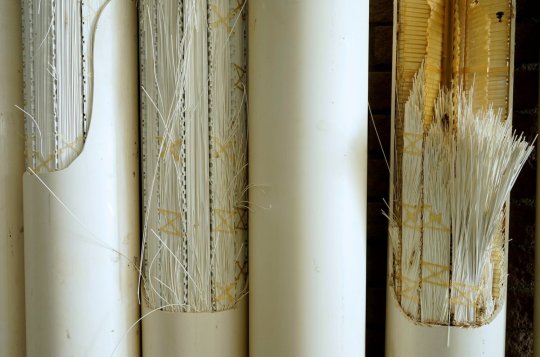
Pictured: These ultrafiltration membranes help to remove bacteria, viruses and pathogens. Image: Margaret Courtney-Clarke
“We know that we have antibiotics in the water, preservatives from cosmetics, anti-corrosion prevention chemicals from the dishwasher,” Honer explains. “We find them and we remove them.”
Honer adds that online instruments monitor the water continuously, and staff ensure that only drinking water that meets World Health Organisation (WHO) guidelines is sent to homes. If any inconsistencies are detected, the plant goes into recycle mode and distribution is halted until correct values are restored.
“The most important rule is, and was, and always will be ‘safety first’,” says Honer. The facility has never been linked to an outbreak of waterborne disease, and now produces up to 5.5m gallons of drinking water every day – up to 35 per cent of the city’s consumption.
Namibians couldn’t survive without it, and as water shortages grip the planet, Windhoek’s insights and experience are more important than ever.
Interest from superpowers across the globe
In recent years, delegations from the US, France, Germany, India, Australia, Singapore, and the United Arab Emirates have visited Windhoek seeking solutions to water shortages in their own countries.
Megadrought conditions have gripped the US since 2001, and the Colorado River – which provides 40 million people with drinking water – has been running at just 50 per cent of its traditional flow. As a result, several states including Texas, California, Arizona and Colorado are beginning to embrace DPR.
Troy Walker is a water reuse practice leader at Hazen and Sawyer, an environmental engineering firm helping Arizona to develop its DPR regulations. He visited Windhoek last year. “It was about being able to see the success of their system, and then looking at some of the technical details and how that might look in a US facility or an Australian facility,” he said. “[Windhoek] has helped drive a lot of discussion in industry. [Innovation] doesn’t all have to come out of California or Texas.”

Pictured: The internal pipes and workings of Namibia's DPR plant. As water becomes scarcer in some parts, countries are looking to DPR for solutions. Image: Margaret Courtney-Clarke
Namibia has also helped overcome the biggest obstacle to DPR – public acceptance. Disgust is a powerful emotion, and sensationalist ‘toilet to tap’ headlines have dismantled support for water reuse projects in the past. Unfortunately, DPR’s biggest strength is also its biggest weakness, as the speed at which water can re-enter the system makes it especially vulnerable to prejudice, causing regulators to hesitate. “Technology has never been the reason why these projects don’t get built – it’s always public or political opposition,” says Patsy Tennyson, vice president of Katz and Associates, an American firm that specialises in public outreach and communications.
That’s why just a handful of facilities worldwide are currently doing DPR, with Windhoek standing alongside smaller schemes in the Philippines, South Africa and a hybrid facility in Big Spring, Texas. But that’s all changing. Drought and increased water scarcity worldwide are forcing us to change the way we think about water.
Now, the US is ready to take the plunge, and in 2025, El Paso Water will begin operating the first ‘direct to distribution’ DPR facility in North America, turning up to 10m gallons of wasterwater per day into purified drinking water – twice as much as Windhoek. San Diego, Los Angeles, California, as well as Phoenix, Arizona are also exploring the technology."
Of course, DPR is not a silver bullet in the fight against climate change. It cannot create water out of thin air, and it will not facilitate endless growth. But it does help cities become more climate resilient by reducing their reliance on natural sources, such as the Colorado River.
As other nations follow in Namibia’s footsteps, Windhoek may no longer take the lead after almost six decades in front.
“But Windhoek was the first,” Honer reminds me. “No one can take that away.”"
-via Positive.News, August 30, 2023
#namibia#africa#desert#water shortage#water conservation#dpr#potable water#water recycling#clean water#drought#united states#colorado river#science and technology#sanitation#good news#hope
2K notes
·
View notes